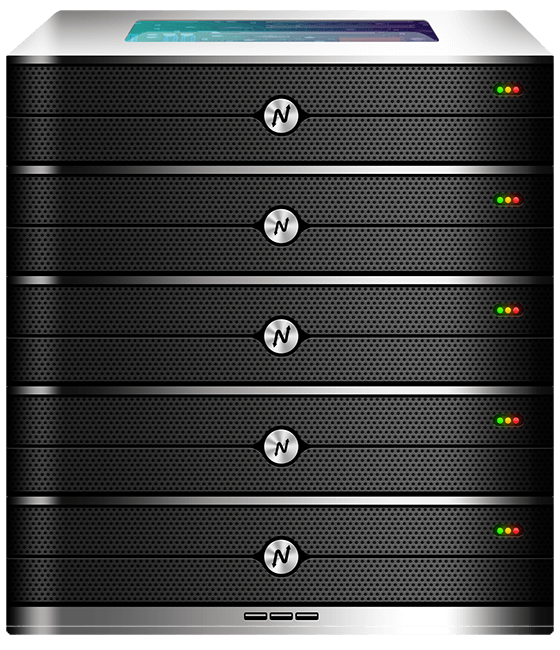If you build Laravel apps, choosing the best Laravel hosting matters more than picking a catchy provider name. Laravel needs a host that supports SSH, Composer, queue workers, scheduled tasks, and fast disk I/O. Whether you run small client sites or high-traffic SaaS, the right hosting reduces deployment friction, speeds response times, and keeps operational costs predictable.
Indian hosting infrastructure is especially attractive for many developers and businesses. India offers cost-effective data centers, lower latency across South and Southeast Asia, strong peering to global networks, and the regulatory options required for data residency. For Laravel applications that target Asian users or global audiences using a CDN, Indian servers provide a compelling mix of performance and value. This guide explains how to evaluate and pick the best Laravel hosting, compares Indian servers to other regions, gives real-world use cases, and recommends XenaxCloud plans that fit common Laravel workloads.
Why server choice matters for Laravel

Laravel is a modern PHP framework that relies on a few server capabilities to shine. It uses Composer to manage dependencies, Redis or Memcached for caching, queues for background jobs, and often needs database tuning for high write volumes. Shared hosting can be tempting for cost reasons, but it often limits SSH access, Composer support, and control over PHP-FPM or OpCache settings.
When evaluating the best Laravel hosting, look for these technical features: SSH and SFTP access, Composer and Git support, configurable PHP-FPM, OPcache, a recommended PHP version (8.x+), support for Redis/Redis clustering, and reliable backups. Disk speed matters — SSD or NVMe storage improves database and file upload performance. Security features such as WAF, DDoS protection, and easy TLS provisioning are also essential.
For many production Laravel apps, a managed VPS or dedicated server is the sweet spot: it provides full control and predictable resources without the overhead of managing physical hardware. If you prefer a ready-made environment but want control, XenaxCloud’s VPS offerings are a natural fit and provide the infrastructure you need to run Laravel efficiently. https://xenaxcloud.com/vps-server/
How to choose the right hosting plan for Laravel
Picking the best Laravel hosting starts by mapping app needs to server specs.
- Small sites or prototypes: require minimal CPU and RAM, but need SSH and Composer. A Starter VPS or even a Shared Hosting — Silver can work for very low-traffic blogs or portfolio sites.
- Growing apps with moderate traffic: need 4–8 vCores and 8–32GB RAM to run queue workers and background jobs. A KVM VPS 3 — 8 Vcore CPU, 32GB RAM, 80GB Storage, 5TB Bandwidth, $17.99 is a solid choice for mid-size apps.
- High-traffic or heavy I/O apps: choose 16+ vCores, NVMe storage, and 10TB+ bandwidth. Consider dedicated servers or high-tier KVM VPS with Gold or Speed variants for raw throughput.
Storage and bandwidth are often the unsung heroes. Laravel apps that handle file uploads, video assets, or large datasets should use NVMe for the database and offload static files to a CDN. Also design for horizontal scaling: architect your app to run multiple stateless web nodes with a central database and Redis cache.
For teams that prefer prebuilt management tools and faster provisioning, consider the XenaxCloud VPS templates for Laravel deployments.
- 4 GB RAM
- 40 GB SSD Storage
- 2 TB Bandwidth
- 1 IPV4 & IPV6
Speed, uptime, and security for Laravel
Performance and reliability are key ranking signals and user experience drivers. The best Laravel hosting optimizes at each layer: PHP process management, object caching, database tuning, and networking.
Performance tactics:
- Use PHP-FPM with tuned pm.max_children and OPcache enabled to reduce cold starts.
- Place Redis for session and cache storage to prevent database bottlenecks.
- Use queue daemons (supervisord) for long-running jobs and choose enough worker processes.
- Enable HTTP/2 and Brotli gzip on the webserver for faster asset delivery.
Uptime and availability:
- Choose providers with redundant network paths, multi-homing, and 24/7 support.
- Automate health checks and use load balancers for transparent failover.
- Regular snapshots and tested restores reduce recovery time after incidents.
Security essentials:
- Enforce HTTPS with automatic certificate renewal via Let’s Encrypt.
- Apply least-privilege file permissions and store secrets in environment variables or vaults.
- Use web application firewalls and DDoS mitigation on production endpoints.
- Schedule regular security updates, or opt for managed updates if you prefer.
These practices make any chosen hosting plan feel faster and more reliable, and they are part of what separates the best Laravel hosting from cheap, unmanaged options.
Comparison: Indian servers vs US, Canada, Germany, UAE
This operational comparison focuses on performance, support, and global reach — not pricing. It explains why Indian hosting can be the best Laravel hosting for many use cases.
| Criteria | India | US/Canada | Germany | UAE |
|---|---|---|---|---|
| Latency (Asia) | Lowest for South & Southeast Asia | Higher | Moderate | Good for ME |
| Global routing | Strong peering; good IX presence | Excellent | Excellent (EU) | Good |
| Support availability | 24/7 with regional teams | 24/7 global | High-SLA support | Regional business hours |
| Compliance & data residency | Local options | US regulations | EU protection | Local regulations |
| Provisioning speed | Fast | Fast | Varies | Varies |
Indian servers offer a strong cost-performance proposition, especially if your user base is in Asia. For global audiences, combine Indian origin servers with a global CDN and Anycast DNS to achieve consistent global performance. This architecture lets you claim the best Laravel hosting benefits while controlling costs and maintaining compliance.
Real-world Laravel use cases and examples
- SaaS application with multi-tenant DB: A typical stack uses 8 vCores, 32GB RAM, and Redis caching. Put the database on a separate high-I/O server or managed DB, and run web nodes behind a load balancer.
- E-commerce platform: Peak shopping traffic and payment transactions require 16+ vCores and NVMe storage for the DB, with queue workers to handle order processing asynchronously.
- Content-heavy CMS: Offload media to object storage and CDN, and use a small cluster of web nodes (4–8 vCores each) to serve pages and APIs.
- API backend for mobile apps: Prioritize low latency and autoscaling; keep caches close to application nodes and use horizontal scaling to handle bursts.
Concrete plan fit: for most small-to-medium production Laravel apps, KVM VPS 3 — 8 Vcore CPU, 32GB RAM, 80GB Storage, 5TB Bandwidth, $17.99 offers the CPU and RAM required to run queue workers, Redis, and multiple PHP-FPM pools. For simpler sites, a Shared Hosting — Gold can suffice, but be mindful of Composer and SSH limitations.
Scalability patterns for startups and agencies
Startups need a growth path that avoids costly replatforming. Here’s a pragmatic scaling strategy:
Phase 1 — Launch: Use a low-cost VPS or shared instance for development and early customers. Keep infrastructure simple and instrumented for metrics.
Phase 2 — Stabilize: Move to a higher-tier VPS like KVM VPS 2 or KVM VPS 3 to handle production traffic. Introduce Redis and separate database nodes.
Phase 3 — Scale: Split services into stateless web nodes, dedicated database servers, and worker nodes. Use autoscaling for stateless layers and managed backups for databases.
Phase 4 — Optimize: Add read replicas, advanced caching (Varnish), and edge caching. Implement blue/green deployments to minimize downtime during releases.
Agencies should offer tiered hosting plans to clients: share a managed shared-hosting tier for small clients, and recommend VPS or dedicated plans for larger clients requiring custom stacks. You can showcase a “migration path” from Shared Hosting — Silver to KVM VPS 3 — 8 Vcore CPU, 32GB RAM, 80GB Storage, 5TB Bandwidth, $17.99 to build trust and upsell.
Deployment and maintenance checklist
Before going live, validate these items for the best Laravel hosting experience:
- PHP runtime and extensions are compatible with your Laravel version.
- Composer and Git are available on the server for deployments.
- Queue runners are managed by systemd or supervisord with auto-restart.
- Environment variables, secrets, and storage permissions are securely configured.
- Backups and rollbacks are tested, and RTO/RPO targets are defined.
- Monitoring, logging, and alerting are in place for CPU, memory, and request latency.
Automate as much as possible. Infrastructure as code (Terraform) and configuration management (Ansible) reduce human error and accelerate reproducible deployments.
FAQs
Which is the best Laravel hosting for beginners?
For beginners, a VPS with SSH and Composer support or a managed shared plan with SSH access is recommended to learn deployments without infrastructure overhead.
Can I use shared hosting for Laravel?
Yes for very simple sites, but shared hosting often restricts Composer, SSH, and process control needed for robust Laravel deployments.
Does XenaxCloud offer Laravel-ready servers?
XenaxCloud provides VPS and dedicated server plans suitable for Laravel; the VPS page is a good starting point for PHP workloads. https://xenaxcloud.com/vps-server/
Is Laravel free hosting available?
There are free or very low-cost hosts for testing, but for production you should avoid free hosting due to limits on performance, security, and support.
How do I scale Laravel under traffic spikes?
Make your app stateless, use horizontal web node scaling, employ Redis and database replicas, and front the origin with a CDN to absorb traffic spikes.
Recommended XenaxCloud plans for Laravel
Based on common Laravel needs, here are precise plan suggestions using the exact plan names and specs:
- Development & testing: Mini Hosting — Starter — 1 Website, 2GB Storage, 10GB Bandwidth, $0.84 for staging and quick proofs of concept.
- Small production sites: Shared Hosting — Silver — 1 Website, 15GB Storage, 100GB Bandwidth, $1.79 for simple sites with limited concurrency.
- Growing applications: KVM VPS 3 — 8 Vcore CPU, 32GB RAM, 80GB Storage, 5TB Bandwidth, $17.99 for mid-size Laravel apps needing worker processes and Redis.
- High performance & scaling: KVM VPS 6 or Gold KVM VPS higher tiers for heavy traffic, or move to Dedicated Servers for single-tenant hardware and extreme I/O needs.
To make provisioning fast and repeatable, use these VPS options and the XenaxCloud offers page to check current deals before purchasing. https://xenaxcloud.com/offers
- 4 GB RAM
- 40 GB SSD Storage
- 2 TB Bandwidth
- 1 IPV4 & IPV6
Conclusion
Finding the best Laravel hosting is about matching your app’s architecture to a provider that gives the right mix of control, performance, and support. For most production Laravel projects, a VPS or dedicated environment with SSH, Composer, Redis, and NVMe storage is ideal. Indian servers offer cost-effectiveness, excellent latency across Asia, strong peering, and scalable options for global reach — making them a smart choice for teams that want value plus performance.
XenaxCloud’s VPS and Dedicated Server offerings provide the building blocks for reliable Laravel deployments, and the recommended plans above map to common development, staging, and production needs. Remember to implement backups, monitoring, HTTP/2, and caching to get the most out of your host.
Ready to migrate or launch? Choose a XenaxCloud plan that fits your needs, take advantage of the 15-day money-back guarantee, and check the XenaxCloud Offers Page for the latest discounts and promotions. Build faster, scale smarter, and make your Laravel app reliably responsive with the right hosting infrastructure.






